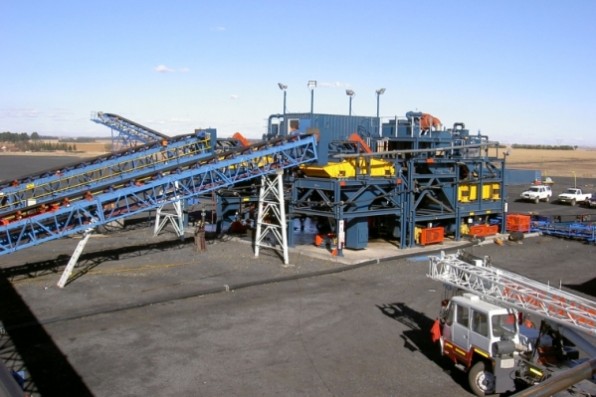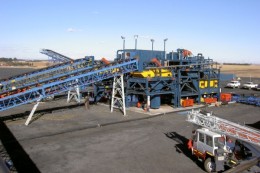County Durham, DL17 0SH, UK
The Use of a Plastic Recycling Plant
17th June, 2013 by Parnaby Cyclones

Generally, a typical plastic recycling plant is used to convert already used plastic waste into reusable plastic particles for the purpose of another plastic manufacturing. The plastic waste will be passed through a number of stages ranging from separation from impurities, granulating, washing, de-watering, and finally to resizing in a plastic recycling plant. The final products will be separated into different sizes based on manufacturing demands and will further be processed in a plastic manufacturing process.
The plastic recycling process is carried out in a plastic recycling plant or facility and it has been known to help the environment to reduce both air and water pollution. Allowing used plastic containers and wastes to pile up on landfills and find their way into our oceans and rivers will certainly constitute a threat to our safety, environment, and aquatic lives. As a result, plastic recycling industries use plastic recycling plants to turn the wastes into usable raw materials for plastic manufacturing industries. The recycled plastic products also offer benefits to manufacturers as it helps to reduce material consumption, the energy needed to make new plastic and extends the life of plastic making plant.
Generally, plastic is manufactured from natural and organic raw materials such as cellulose, coal, natural gas, salt, and crude oil that are all mixed, superheated, and mold to form a plastic through various plastic manufacturing techniques. Plastics are of two main types which are thermoplastic and thermoset plastics. Thermoplastics are known to be 100% recyclable and can be recycled endlessly without any loss in purity or quality in a plastic recycling plant while thermosets are non-recyclable. This is because the thermoset plastic contains polymer molecules that cross-link to form an irreversible chemical bond that cannot be melted and re-molded to form a new plastic and thus is non-recyclable in a plastic recycling plant.
In most cases, plastic recycling industries try to employ the best recycling program that is expected to result in contaminant-free recycled plastic particles. The selection and arrangement of plastic recycling plant and equipment depend largely on whether a dry or wet process method is employed.
In a typical plastic recycling plant or material recycling facility, the recycled plastic products are known to be most contaminated with excessive quantities of organic waste, which will certainly require further processing to achieve very cleaned plastic pellets for manufacturing. Over some time, dry methods of separation using air pressure have been used to get rid of such contaminants. However, such methods result in a high percentage of the smaller plastic particles being retained in the recovered organic waste, thus considerably reducing the relatively larger clean plastics now available from the original through the plastic recycling plant. To deal with this situation, plastic recycling industries are selecting and using the recently designed and efficient plastic washing plant which adopts the more efficient wet process. The plastic washing plant is specifically designed for further processing of difficult and highly contaminated recycled plastics. This will certainly improve and increase the overall efficiency of plastic recycling plant in recycling industries over existing dry processing methods.
The Use of a Plastic Recycling Plant
17th June, 2013 by Parnaby Cyclones

Generally, a typical plastic recycling plant is used to convert already used plastic waste into reusable plastic particles for the purpose of another plastic manufacturing. The plastic waste will be passed through a number of stages ranging from separation from impurities, granulating, washing, de-watering, and finally to resizing in a plastic recycling plant. The final products will be separated into different sizes based on manufacturing demands and will further be processed in a plastic manufacturing process.
The plastic recycling process is carried out in a plastic recycling plant or facility and it has been known to help the environment to reduce both air and water pollution. Allowing used plastic containers and wastes to pile up on landfills and find their way into our oceans and rivers will certainly constitute a threat to our safety, environment, and aquatic lives. As a result, plastic recycling industries use plastic recycling plants to turn the wastes into usable raw materials for plastic manufacturing industries. The recycled plastic products also offer benefits to manufacturers as it helps to reduce material consumption, the energy needed to make new plastic and extends the life of plastic making plant.
Generally, plastic is manufactured from natural and organic raw materials such as cellulose, coal, natural gas, salt, and crude oil that are all mixed, superheated, and mold to form a plastic through various plastic manufacturing techniques. Plastics are of two main types which are thermoplastic and thermoset plastics. Thermoplastics are known to be 100% recyclable and can be recycled endlessly without any loss in purity or quality in a plastic recycling plant while thermosets are non-recyclable. This is because the thermoset plastic contains polymer molecules that cross-link to form an irreversible chemical bond that cannot be melted and re-molded to form a new plastic and thus is non-recyclable in a plastic recycling plant.
In most cases, plastic recycling industries try to employ the best recycling program that is expected to result in contaminant-free recycled plastic particles. The selection and arrangement of plastic recycling plant and equipment depend largely on whether a dry or wet process method is employed.
In a typical plastic recycling plant or material recycling facility, the recycled plastic products are known to be most contaminated with excessive quantities of organic waste, which will certainly require further processing to achieve very cleaned plastic pellets for manufacturing. Over some time, dry methods of separation using air pressure have been used to get rid of such contaminants. However, such methods result in a high percentage of the smaller plastic particles being retained in the recovered organic waste, thus considerably reducing the relatively larger clean plastics now available from the original through the plastic recycling plant. To deal with this situation, plastic recycling industries are selecting and using the recently designed and efficient plastic washing plant which adopts the more efficient wet process. The plastic washing plant is specifically designed for further processing of difficult and highly contaminated recycled plastics. This will certainly improve and increase the overall efficiency of plastic recycling plant in recycling industries over existing dry processing methods.

